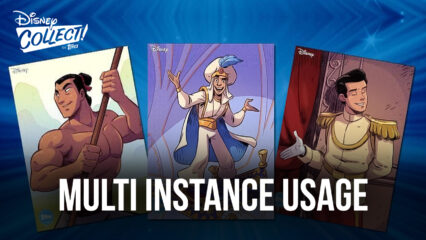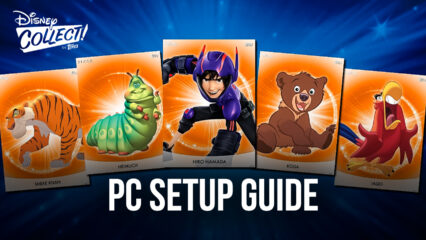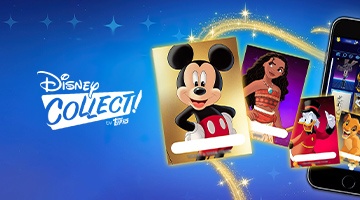Disney Collect! by Topps Card Trading Etiquette and Guide

In the past, card collecting hobbyists would need to meet up and get together to show off their collections and trade cards. And while some of this has changed somewhat with the advent of the internet, the rise of mobile gaming has taken the card collecting game genre to a whole new level, letting users manage and view their collections at any moment from the convenience of their cellphones, with the cards themselves never degrading or losing value due to wear and tear since, well, they’re entirely digital.
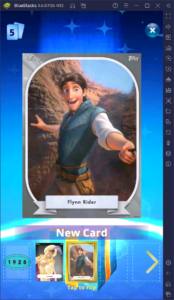
Disney Collect! by Topps is one of the most iconic card collecting games on the mobile platform. And though it’s definitely not the only one, it’s interesting because it offers no gameplay aside from collecting cards. In other words, it’s quite literally a digital version of the card collecting hobby, that you can carry anywhere on your phone, instead of having to lug them around in albums or other means. And since the supply and circulation of cards is carefully monitored by the dev team at The Topps Company, they are just as valuable, or perhaps even more so, than some of their physical counterparts in real life.
When it comes to actually putting together sets and completing your collection, however, there are some parameters and rules that are good to know, particularly if you want to create good faith for yourself in the community. After all, if you create a bad reputation by commonly offering bad or misleading trades, it’ll probably be difficult for you to interact with players and barter for cards.
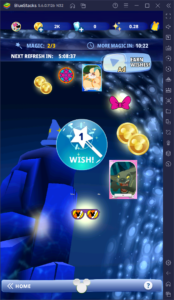
With that being said, let’s go ahead and dive into some basic facts about determining a card’s value, as well as go over a few simple etiquette suggestions when trading with other players.
Card Information and Value
While the beauty and worth of a card is subject to the preferences of its owner, there are some parameters that we can examine to determine the actual objective value of a card in trades. Luckily, most of these are readily available by flipping the card over and checking out its stats.
Here are what some of these parameters actually mean:
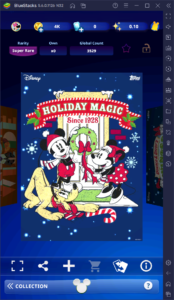
- Release Year: Self-explanatory; it’s when the card was introduced into the game. This date is important since the older a card gets, the higher its value in general, especially after it becomes unavailable.
- Availability: The current availability status of a card, indicating how it can be acquired currently.
- Current Count (CC): The number of cards in circulation around the market. The lower this number, the higher its value.
- Collection Score: An arbitrary score assigned by the game that indicates its worth within a collection. This number is often not representative of a card’s actual value in trades.

Though there are more parameters to be found on the back of most cards, these are the most important for determining a card’s worth in the market and its value when you’re seeking to trade it for other cards.
Etiquette Basics
Though this will definitely vary from person to person, there are some basic principles that everyone is usually expected to abide by when trading cards on the free market in Disney Collect!
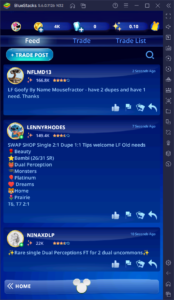
- There are three main concise terms used for trading in Disney Collect!. These are “Looking For”, “For Trade”, and “Dupes for Needs”. The first is used to request a card from the general community; the second means that you’re looking to give away a certain card in trade, and the third usually implies that you’re seeking to trade duplicate cards of a set, for specific cards of that same set. Using these terms correctly when trading online can lead to quick responses, and they help you look more professional, trustworthy, and like you actually know what you’re doing.
- When looking to trade a newer card for an older one of a discontinued collection, keep in mind that the latter will often have more value. And as time passes, older cards will continue to increase in value. The only time when newer cards might actually be more valuable is before the set awards are given out, after which they go down in value somewhat.
- Communities like the Disney Collect! subreddit are always great places to ask around for specific cards, and even to engage in trading. Similarly, their Disney Collect! subreddit Discord server lets you chat with other users in real-time, and even has bots in place to help you learn the players that are hoarding specific cards.
- Though Topps does not condone the use of secondary selling platforms such as Ebay for trading or selling cards, this is not illegal. In this sense, you could also sell or buy cards on these platforms. Curiously enough, this is also a good way to get a rough estimate of a card’s value in USD, in order to know what it’s worth when trading it for other cards.
- Don’t be pushy! If a player has a card that you want or need, but is not willing to give it up, be respectful of their wishes and move on. The game does not have any achievements, so there’s no need to be rude or disrespectful.
- When it comes to trading cards themselves, people are very frequently trading entire sets, as opposed to individual cards, unless specified otherwise. Nevertheless, nothing is stopping you from posting singles on your feed and in the trading post, and the “Dupes for Needs” label is there for a reason. It’s just worth knowing that players in the community often prefer trading in sets rather than singles.
- It goes without saying, but if you REALLY want a specific card that another player has in their possession, try to offer something above its value, just to make it worth their time and to show them that you respect their collection. This might ensure a smoother trade, and will likely generate good faith, leading to future trades or for them to return the favor at some point.
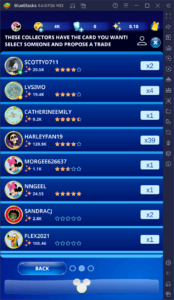
It’s worth pointing out that, while these etiquette principles are not set in stone, they’re guidelines for ensuring that your trades go smoothly. To that end, always keep them in mind when you’re looking to complete your collections.


